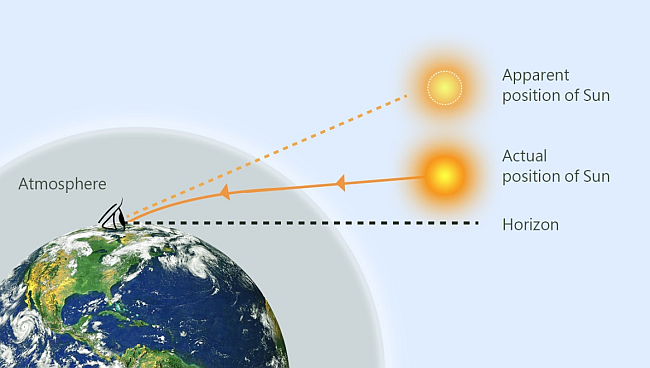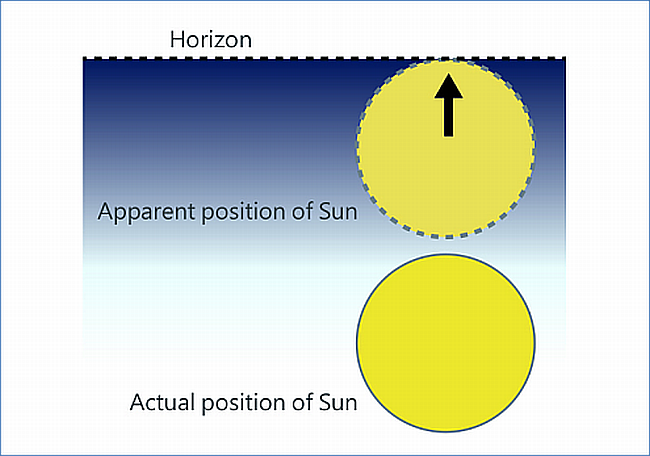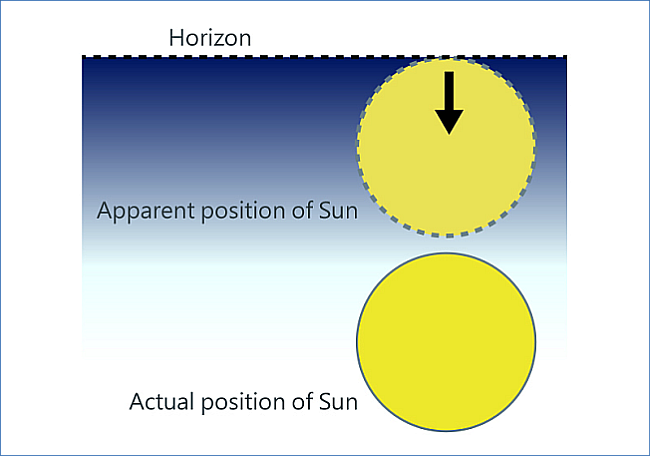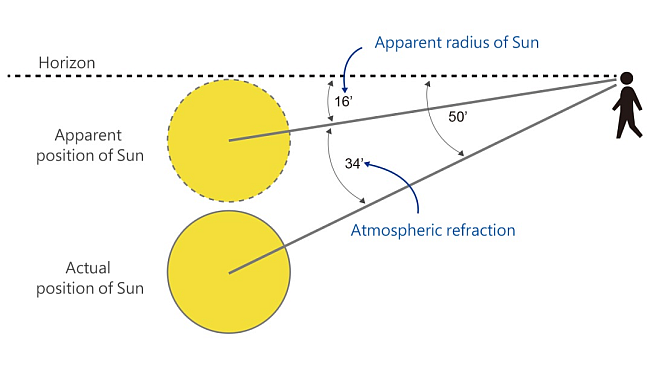Effect of atmospheric refraction on the times of sunrise and sunset
Effect of atmospheric refraction on the times of sunrise and sunset
TONG Yu-fai
August 2017
Sunrise and sunset are the instants when the upper edge of the Sun appears and disappears over the horizon respectively as a result of Earth's rotation. The times of sunrise and sunset are determined by the observation date as well as the observer's location, altitude and time zone (see the article “A Day That Lasts One Year”). They are also affected by the atmospheric refraction when sunlight passes through the atmosphere.
The density of the atmosphere is not even and decreases with increasing altitude. At a result, when sunlight passes through the atmosphere, successive refraction occurs and bends the sunlight towards the ground (see Figure 1). If we look towards the Sun, the altitude of the observed Sun's image (i.e. the apparent position of the Sun) will be higher than the actual location of the Sun. Therefore, sunrise occurs before the Sun actually reaches the horizon (see Figure 2(a)). Similarly, the Sun truly disappears below the horizon before sunset happens (see Figure 2(b)).

Figure 1 Successive atmospheric refraction occurs when sunlight passes through the atmosphere (diagram not to scale)

Figure 2a Sunrise occurs before the Sun actually reaches the horizon.

Figure 2b The Sun actually sinks below the horizon before sunset happens.
So how much does atmospheric refraction impact on the times of sunrise and sunset? When the sunlight from the Sun's upper edge reaches the horizon at sunrise and sunset (see Figure 3), the actual altitude of the centre of the Sun is about -0o50’[1] (negative value means below the horizon). About -0o16’[2] of this actual altitude is the apparent radius of the Sun. The remaining -0o34’[2] is the effect of atmospheric refraction under average atmospheric condition, leading to the apparent effect of advanced sunrise and delayed sunset. For example in Hong Kong, the atmospheric refraction causes the sunrise and sunset to appear about 2 minutes early and late respectively when compared to the situation without the atmospheric refraction. In fact, the times of sunrise and sunset announced by the Hong Kong Observatory have already included the effect of the atmospheric refraction so that users do not need to calculate the times by themselves.

Figure 3 The -0o50’ in altitude at sunrise and sunset includes both the apparent radius of the Sun and the effect of atmospheric refraction.
References:
[1] Hong Kong Observatory Almanac 2017 – Paths of the Sun throughout the Year
[2] Atmospheric refraction, Wikipedia
[1] Hong Kong Observatory Almanac 2017 – Paths of the Sun throughout the Year
[2] Atmospheric refraction, Wikipedia